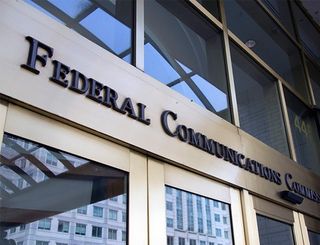FCC Votes to Harmonize Pole-Attachment Rates

Confirming a report last month in Multichannel News on the proposal, the FCC has agreed to a cable operator/telecom joint petition to modify the cost-allocation model for pole attachments to ensure that the reclassification of ISPs as telecoms does not result in higher attachment fees for cable ops. In the process, it effectively lowered the rate for telecoms, so both sides were celebrating.
The FCC has for several years been taking steps to lower those costs and speed approvals to encourage broadband buildouts, which is one of the FCC's prime directives.
The National Cable & Telecommunications Association (NCTA) and COMPTEL sought clarification of the rates and proposed an approach to regularize them, which the FCC accepted and will employ.
It essentially brings the telecom rate down to approximately that of the cable rate, or about 7.4% of the annual cost of a pole. Not surprisingly, utility companies were not clamoring to be paid a lower rate.
"We appreciate the Commission's decision to grant our petition and ensure that all telecommunications carriers and cable operators can attach facilities to utility poles at reasonable rates," NCTA said in a statement. "While much has changed in the four years since the petition was filed [in 2011], reasonable pole attachment rates continue to be a critical factor in promoting broadband deployment."
INCOMPAS (formerly COMPTEL) agreed.
“The FCC’s decision to essentially grant the joint request by telecommunication carriers and cable operators to ensure unified and reasonable pole attachment rates is a win for consumers and business customers looking to connect with future networks," said INCOMPAS CEO Chip Pickering.
Broadcasting & Cable Newsletter
The smarter way to stay on top of broadcasting and cable industry. Sign up below
Telecoms historically paid more for those pole attachments than cable ops. But in the interests of promoting broadband, the FCC in 2011 tried to harmonize the rates by lowering the telecom rate to the cable rate. That turned out not to have worked in practice "in all circumstances," said cable operators, something the FCC concedes, and gave pole owners a cost-allocation alternative that allowed them to still charge a higher rate. NCTA and COMPTEL asked the FCC to fix that.
The FCC declined to forbear from the pole-attachment rate provisions in Title II, but the FCC cautioned that “any increase in the rates” prompted by the reclassification would be “unacceptable as a policy matter.”
The American Cable Association has also been pushing the FCC to act on the NCTA petition, given that the Title II reclassification took effect June 12. ACA and NCTA both urged the FCC earlier in the year to deal with the pole attachment issue before it took the action on new Open Internet rules, which did not happen. Now it has.
Contributing editor John Eggerton has been an editor and/or writer on media regulation, legislation and policy for over four decades, including covering the FCC, FTC, Congress, the major media trade associations, and the federal courts. In addition to Multichannel News and Broadcasting + Cable, his work has appeared in Radio World, TV Technology, TV Fax, This Week in Consumer Electronics, Variety and the Encyclopedia Britannica.

